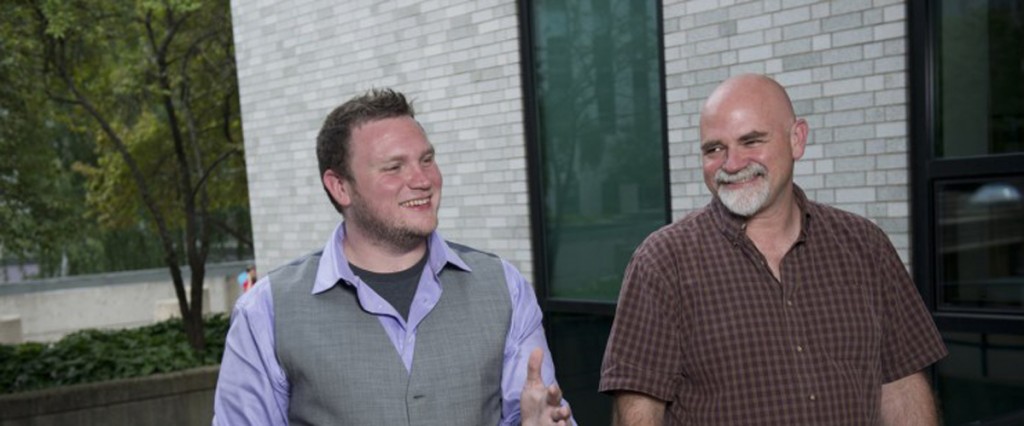by Angela Herring
If you ask a kid what it means to be male or female, you’ll likely get a pretty stereotypical response. Boys, kids tend to think, are inherently interested in boy-like things—trucks, baseball, and construction work—while girls are inherently interested in dolls, dress-up, and tea parties. Boys like to build things and go fishing and want to be football players when they grow up. Girls like to sew, wear makeup, and want to be ballerinas. For the young examinee, the behavioral tendencies of boys and girls are just as fundamental as their physical attributes.
Most research has found that this stereotypical, or “essentialist,” thinking tends to fade as we get older. According to associate professor of psychology John Coley, the academic literature has suggested that by the time we’re in elementary school we start to see environment as playing a large role in the manifestation of gender roles. We learn that girls aren’t inherently more inclined to be teachers and nurses, but that our environment and our experiences urge us into such gender-normal behaviors.
But new research from Coley and R. Cole Eidson, a doctoral candidate in his Categorization and Reasoning Lab at Northeastern, suggests that we retain some of our childlike, essentialist-thinking into adulthood. In a paper published earlier this year in the Journal of Cognition and Development, the duo repeated earlier studies of children using a group of undergraduate students, but they added a twist.
Eidson explained that if you could strip away an adult’s years of cultural learning—in which they collect a better understanding of people’s individuality and how they think and behave—“then you might still find essentialist thinking lurking beneath the surface.” To accomplish this, they gave the study’s participants a time constraint.
First, they presented the 36 male and 33 female participants with four characters: a girl raised by only women, a girl raised by only men, a boy raised by only women, and a boy raised by only men. Then, just as with the earlier studies on children, they asked the participants how the individual would behave in a particular situation or what kinds of physical attributes the person would have as an adult. But unlike the earlier studies, Eidson and Coley split their participants into two groups with two different directives. Half of them had to wait 10 seconds before making their decision about the character while the other half had to make a snap judgment, answering the question in less than two seconds.
The constraint made a significant difference. Those who had to reply quickly tended to respond with more stereotypical answers, just as a pre-elementary-school child might do. The participants who had more time to consider their replies tended to respond with more socially-acceptable answers.
“This work shows that essentialist thinking is automatic and deeply-rooted, but that people can overcome this bias given time and cognitive resources,” Coley said.
The researchers found that male participants tended to partake in more essentialist thinking than their female counterparts, regardless of the group to which they were assigned. They also found that all participants, regardless of condition or their own gender, held stronger stereotypes about males than about females. “People,” Eidson explained, “are less willing to accept violations of the male gender role than of the female gender role.”
Coley and Eidson can only speculate on why this might be the case, but perhaps, Coley said, it has something to do with the fact that female gender roles have undergone a determined shift over the past century.
This research continues the work being done in Coley’s lab examining the way humans categorize their world. But this study is among the first to look at the cognitive processes underlying the way we categorize our fellow humans based on gender.
The work, Eidson said, has implications for dealing with social phenomena such as prejudice and stereotyping. If we believe that different groups have different inherent properties and we start assigning values to those properties, “then really quickly you can move into a place where one group is less desirable than another,” he said. “Even adults are still doing this, it’s just under the surface. Understanding that may give you some kind of inroad to dealing with those kinds of issues.”
Originally published is news@Northeastern on August 4, 2014.

